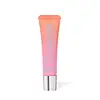What's inside
What's inside
 Key Ingredients
Key Ingredients

 Benefits
Benefits

 Concerns
Concerns

 Ingredients Side-by-side
Ingredients Side-by-side

Ricinus Communis Seed Oil 19.17%
MaskingCocos Nucifera Oil 19%
MaskingBeeswax 19%
Emulsion StabilisingMacadamia Integrifolia Seed Oil 17.8%
Skin ConditioningButyrospermum Parkii Butter 8.21%
Skin ConditioningOlea Europaea Fruit Oil 5%
MaskingPerilla Ocymoides Seed Oil 5%
Skin ConditioningEuphorbia Cerifera Cera 4.5%
AstringentPersea Gratissima Oil 2.2%
Skin ConditioningHizikia Fusiforme Extract
Skin ConditioningTocopherol
AntioxidantHelianthus Annuus Seed Oil
EmollientRicinus Communis Seed Oil 19.17%, Cocos Nucifera Oil 19%, Beeswax 19%, Macadamia Integrifolia Seed Oil 17.8%, Butyrospermum Parkii Butter 8.21%, Olea Europaea Fruit Oil 5%, Perilla Ocymoides Seed Oil 5%, Euphorbia Cerifera Cera 4.5%, Persea Gratissima Oil 2.2%, Hizikia Fusiforme Extract, Tocopherol, Helianthus Annuus Seed Oil
Bis-Diglyceryl Polyacyladipate-2
EmollientRicinus Communis Seed Oil
MaskingButyrospermum Parkii Butter
Skin ConditioningPolyhydroxystearic Acid
EmulsifyingTocopheryl Nicotinate
AntioxidantEthylhexyl Palmitate
EmollientSimmondsia Chinensis Seed Oil
EmollientJojoba Esters
EmollientTribehenin
EmollientHelianthus Annuus Seed Wax
Skin ConditioningPunica Granatum Flower Extract
Skin ConditioningButyrospermum Parkii Butter Unsaponifiables
Skin ConditioningOctyldodecanol
EmollientAcacia Decurrens Flower Wax
EmollientSodium Hyaluronate
HumectantGlucomannan
Skin ConditioningPolyglycerin-3
HumectantSorbitan Isostearate
EmulsifyingTrihydroxystearin
Skin ConditioningPolyglyceryl-3 Diisostearate
EmulsifyingFoeniculum Vulgare Fruit Oil
PerfumingPalmitoyl Tripeptide-1
Skin ConditioningHelianthus Annuus Seed Oil
EmollientEthylhexylglycerin
Skin ConditioningRosmarinus Officinalis Leaf Oil
MaskingVanillin
MaskingCitrus Aurantium Dulcis Peel Oil
MaskingTocopherol
AntioxidantTitanium Dioxide
Cosmetic ColorantCI 77891
Cosmetic ColorantCI 45410
Cosmetic ColorantBis-Diglyceryl Polyacyladipate-2, Ricinus Communis Seed Oil, Butyrospermum Parkii Butter, Polyhydroxystearic Acid, Tocopheryl Nicotinate, Ethylhexyl Palmitate, Simmondsia Chinensis Seed Oil, Jojoba Esters, Tribehenin, Helianthus Annuus Seed Wax, Punica Granatum Flower Extract, Butyrospermum Parkii Butter Unsaponifiables, Octyldodecanol, Acacia Decurrens Flower Wax, Sodium Hyaluronate, Glucomannan, Polyglycerin-3, Sorbitan Isostearate, Trihydroxystearin, Polyglyceryl-3 Diisostearate, Foeniculum Vulgare Fruit Oil, Palmitoyl Tripeptide-1, Helianthus Annuus Seed Oil, Ethylhexylglycerin, Rosmarinus Officinalis Leaf Oil, Vanillin, Citrus Aurantium Dulcis Peel Oil, Tocopherol, Titanium Dioxide, CI 77891, CI 45410
Ingredients Explained
These ingredients are found in both products.
Ingredients higher up in an ingredient list are typically present in a larger amount.
This ingredient is also known as shea butter. It is an effective skin hydrator and emollient.
Emollients help soothe and soften your skin. It does this by creating a protective film on your skin. This barrier helps trap moisture and keeps your skin hydrated. Emollients may be effective at treating dry or itchy skin.
Shea butter is rich in antioxidants. Antioxidants help fight free-radicals, or molecules that may harm the body. It is also full of fatty acids including stearic acid and linoleic acid. These acids help replenish the skin and keep skin moisturized.
While Shea Butter has an SPF rating of about 3-4, it is not a sunscreen replacement.
Shea butter may not be fungal acne safe. We recommend speaking with a professional if you have any concerns.
Learn more about Butyrospermum Parkii ButterHelianthus Annuus Seed Oil is the oil derived from the seeds of a Sunflower. Sunflower seed oil is non-fragrant. It is an emollient, meaning it helps to soften the skin.
Sunflower seed oil contains many fatty acids. The fatty acids found in sunflower seeds include (from highest amount to least): linoleic acid, myristic acid, palmitic acid, stearic acid, arachidic acid, oleic acid, and linolenic acid.
These fatty acids help the skin create ceramides. Ceramides play a role in repairing the skin barrier.
Helianthus Annuus Seed Oil helps moisturize the skin. This in turn helps the skin look more rejuvenated and smoother.
Sunflowers are rich in vitamin E.
Historians believe Indigenous cultures of North America domesticated sunflowers before corn. Thus they relied on sunflower oil for a variety of uses. One such use is moisturizing skin and hair.
Sunflower seed oil may not be fungal acne safe. We recommend speaking with a professional if you have any concerns.
Learn more about Helianthus Annuus Seed OilRicinus Communis Seed Oil is the INCI name for castor oil.
Castor Oil helps moisturize the skin. It is rich in a fatty acid called ricinoleic acid. This fatty acid helps prevent moisture loss on the skin. This helps keep your skin soft and hydrated. Ricinoleic acid also has anti-inflammatory and pain reducing properties.
Besides hydrating the skin, castor oil is also used to hydrate hair. By keeping the hair shaft moisturized, breakage is decreased. More studies are needed to show castor oil's effective on stimulating hair growth.
Castor oil is created by cold-pressing castor seeds and then purifying the oil with heat. It was used in Ancient Egypt as fuel in lamps and to help treat eye irritation.
The term 'fragrance' is not regulated in many countries. In many cases, it is up to the brand to define this term. For instance, many brands choose to label themselves as "fragrance-free" because they are not using synthetic fragrances. However, their products may still contain ingredients such as essential oils that are considered a fragrance.
Learn more about Ricinus Communis Seed OilTocopherol (also known as Vitamin E) is a common antioxidant used to help protect the skin from free-radicals and strengthen the skin barrier. It's also fat soluble - this means our skin is great at absorbing it.
Vitamin E also helps keep your natural skin lipids healthy. Your lipid skin barrier naturally consists of lipids, ceramides, and fatty acids. Vitamin E offers extra protection for your skin’s lipid barrier, keeping your skin healthy and nourished.
Another benefit is a bit of UV protection. Vitamin E helps reduce the damage caused by UVB rays. (It should not replace your sunscreen). Combining it with Vitamin C can decrease sunburned cells and hyperpigmentation after UV exposure.
You might have noticed Vitamin E + C often paired together. This is because it is great at stabilizing Vitamin C. Using the two together helps increase the effectiveness of both ingredients.
There are often claims that Vitamin E can reduce/prevent scarring, but these claims haven't been confirmed by scientific research.
Learn more about Tocopherol